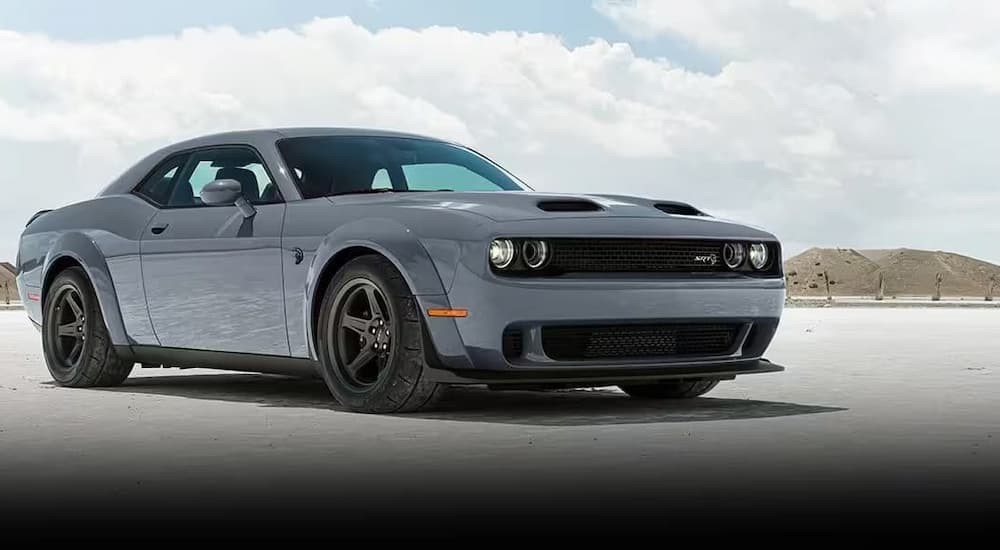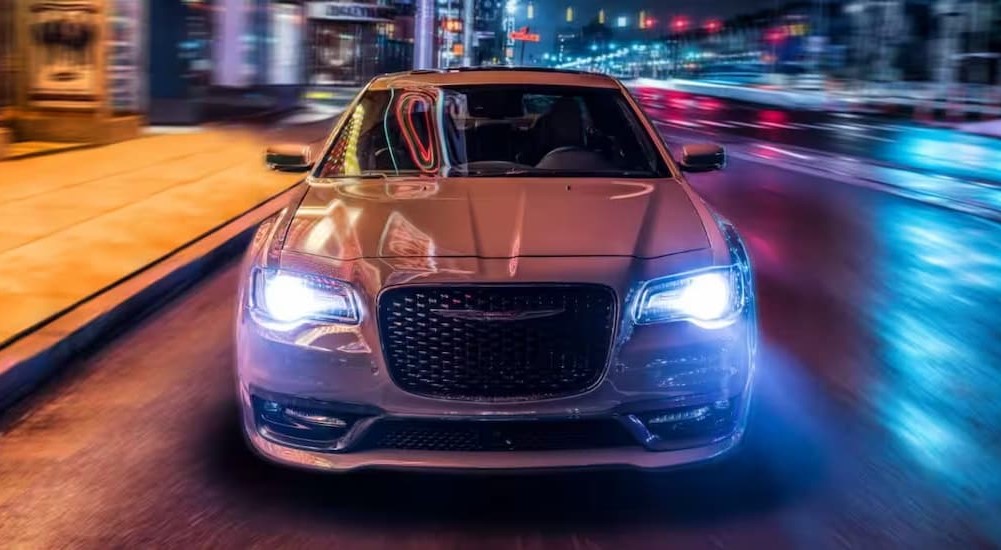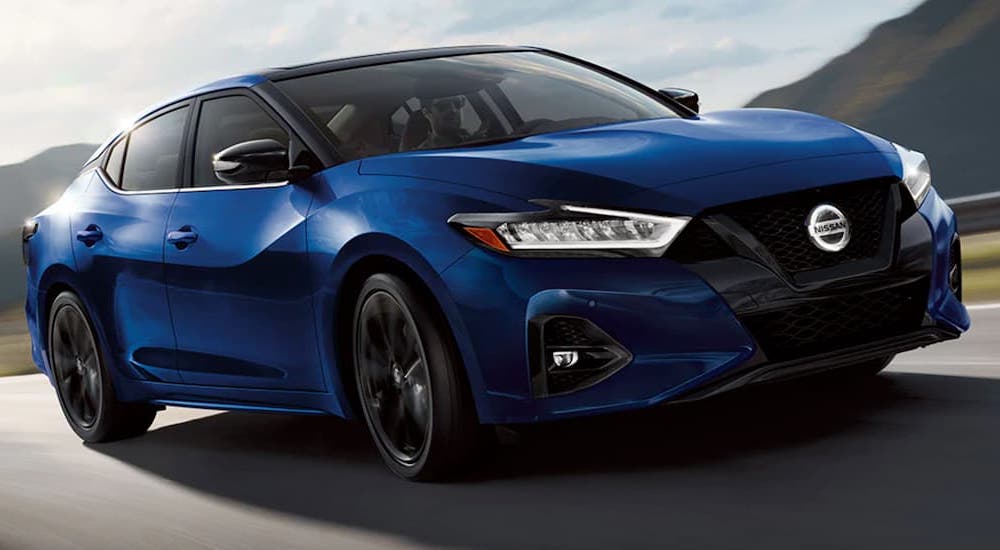They say all good things must come to an end, and some of your favorite cars, trucks, and SUVs are no exception. While every year brings a fresh slate of models, trims, and packages, it also spells the end for certain vehicles that won’t live to see another trip around the sun. Whether it’s due to low sales, tightening emissions standards, or, as is increasingly the case, replacement with a new hybrid or all-electric model, every model’s run has to come to an end someday. As we look forward to 2024, we thought it would be the perfect opportunity to recognize some of the models that are calling it quits following the 2023 model year. From quarter-million-dollar supercars and iconic muscle and pony cars to long-running sedans, sports cars, and even a first-generation EV that’s quickly been outpaced by some of its newer rivals, let’s dive into some of the outgoing models that will take their final lap in 2023.
Dodge Charger and Challenger
The steady march towards an all-electric future is bad news for some of the industry’s most beloved muscle cars. Amid increasingly strict emissions standards and an industry-wide push for widespread EV adoption, models like the Dodge Charger and Challenger are on the way out.
The Charger and Challenger are often described as muscle cars, though some purists might label the Challenger more of a pony car (a long-running debate in the auto world). No matter how you class them, they’re both primed for driving excitement with an ideal combination of power and size that’s long made these two models so popular. The Charger was the first to hit the road in 1966 and was followed two years later by the Challenger. The two models have popped in and out of the Dodge lineup since then, with their most recent iterations debuting in 2005 (Charger) and 2008 (Challenger).
The Charger is expected to live on in a new, electric model dubbed the Charger Daytona SRT EV, which will make anywhere between 455 and 670 horsepower depending on trim and package. Those seeking a gas-powered last call can keep an eye out for a special edition Last Call model that includes one of the most ludicrous engines ever to grace the muscle car, a Demon 170 engine with 1,025 horsepower and a zero-to-60-mph time of 1.7 seconds. The final Challenger is also available in a Last Call edition, complete with a few nice touches including a special commemorative plaque under the hood and a wide array of popular colors from past generations including Plum Crazy, B5 Blue, and Sublime Green.
Chrysler 300
Chrysler’s own muscle car might not have drawn the same attention as the Charger or Challenger, which is probably part of the reason it’s being discontinued. At 19 MPG city and 30 MPG highway, the 300 was far from being the thirstiest muscle car when in its V6 form, but the V8-powered 300C trim lagged a bit behind at 15 city/24 highway. The V8 model more than makes up for it in the power department with a hearty 6.4L engine that gives the 300 some 485 horsepower along with 475 lb-ft of torque. Chrysler outfitted the 300C with carbon fiber accents, Brembo brakes, and an adaptive suspension to round out its athletic bona fides, but it’s still not enough to see the sedan past 2023. To be fair, the 300 did offer something that the Charger and Challenger didn’t, a well-appointed interior with all the cushy bells and whistles one would expect for the luxury segment. If you’ve been pining after the 300, don’t delay. Chrysler is only releasing 2,300 units for 2023.
Audi R8
Some models fail due to underwhelming performance, fuel economy, or by being replaced by a new-and-improved option, but some vehicles simply fail because they cost more than $250,000. In fairness, Audi says the decision to end the R8’s run was based on tightening emissions laws that will make the V10-powered supercar a tough sell with regulators, but sales have also been faltering as of late. At the height of the R8’s power in 2008, Audi was producing around 5,000 units per year, but that number has been on a steady decline over the last decade as interest in the supercar began to wane.
The mid-engine sports car had a compelling high-performance heritage, sharing its platform with supercar heavy-hitters like the Lamborghini Gallardo and Huracán. The R8 featured all the cutting-edge goodies one would expect from Audi, including the automaker’s Quattro permanent all-wheel drive system and the Audi Space Frame. The latter is a unique approach to automotive architecture that sees the R8 built around a high-strength aluminum monocoque frame with integrated panels that also perform a load-bearing function. The V10-powered supercar was never hurting for power with the 2023 model boasting some 602 horsepower and 413 lb-ft of torque, and also served as Audi’s showcase for new and emerging technology. Case in point, the R8 was the first production car with full-LED headlights upon its debut in 2006.
Audi TT
The Audi TT has long been a standout in the world of roadsters and compact coupes. Debuting in 1999, the sporty coupe was most notable for its iconic, Bauhaus-inspired design. The TT lacked the complex curves and lines of many of its competitors with Audi opting for a simplified design that created a clean, minimalist look and a serious lack of air resistance. The original TT has a drag coefficient of just 0.35, putting it in league with some of the speediest models in its segment. Like many of the other models on the list, it’s the rise of electrification that’s spelling the end for the TT with Audi nixing the model to focus on upcoming EV offerings. The TT is going out with a bang with the RS Heritage Edition, a limited run of 50 units featuring unique color schemes designed to honor past Audi rally champs.
Mazda MX-30
If you’ve never heard of the Mazda MX-30 EV, it’s probably because you don’t live in California. Due to its strict emissions standards, the Golden State is home to a number of exclusive models, including the subcompact crossover MX-30 EV. Introduced as recently as 2020, the MX-30’s short lifespan can be attributed to two main factors: a starting price of nearly $35,000, and a paltry range of 100 miles. California has better EV charging infrastructure than most states, but a range of 100 miles is pretty underwhelming and impractical for most drivers. The subcompact provided a fun little ride, but that’s not enough to make up for the EV’s shortcomings. Consumer Reports summed it up well in their 2023 review: “With such a small battery, [it] would have been competitive a decade ago, but it’s not in today’s EV market.” Mazda sold just over 300 units in all of 2022, so we don’t think this model will be too sorely missed.
Mazda CX-9
Mazda is also discontinuing the CX-9 after 2023, but in this case, they already have a replacement lined up. The three-row SUV debuted in 2006 and was a crowd favorite right out of the gate. The midsize model earned Motor Trend’s SUV of the Year award in 2008 and, somewhat confusingly, also took home the North American Truck of the Year Award as a crossover SUV in the same year. The CX-9 was certainly a strong contender in its time, adding Car of the Year and Best Midsize SUV awards in 2017 and 2018, but the market has largely caught up with the crossover. That said, sales haven’t really slowed. Mazda moved almost 35,000 units in 2022, which actually marks the best annual sales since the CX-9’s introduction. Drivers will be happy to hear that the new CX-90 is already on its way, featuring a number of improvements over its predecessor including a larger interior, a powerful turbocharged inline-six engine, and a new plug-in hybrid option with 26 miles of all-electric range.
Nissan Maxima
The Nissan Maxima might be the longest-running model to get the ax in 2023. Nissan’s flagship sedan has been on the market since 1981, but that 42-year run ends this year as the Japanese automaker sunsets the popular model. Originally conceived as an upscale version of the Altima sedan, the Maxima was notable for its peppy V6 engine and premium interior touches. The decision is a little confounding in some ways. Nissan says the Maxima is being cut to make way for a new full-size EV, but has yet to introduce said EV. This leaves Nissan with a noticeable gap in the lineup. Expect the role to be filled in the next few years, as the brand has publicly announced a goal of making 40 percent of its sales all-electric by 2030. With such a long history, we wouldn’t be surprised to see Nissan revive the Maxima name when it finally rolls out the new full-size sedan, but for now, it’s goodbye.
That’s far from an exhaustive list of all the models we’ll be saying goodbye to in 2023, but it covers most of the best-sellers. Other outgoing nameplates include luxury models like the Alpina BMW B7 and Mercedes-Benz CLS, along with various coupe and cabriolet options for existing models. Ferrari will bid farewell to the F8 Tributo and Portofino M. McLaren replaces the 720S with the forthcoming 750S, while the Genesis G70 is gone after just four years on the market. While it’s sad to see some of these models head down that old, dusty trail, it’s also encouraging news for those looking forward to the coming generation of all-electric models. Automakers are committing to the EV segment to a degree that we’ve never seen before, which should go a long way in lowering the price and making the segment more accessible to a wider audience. EVs have made major strides in terms of performance over the last half-decade, with the all-electric powertrain enabling the sort of power, torque, and acceleration that are miles ahead of the hybrid and electric options of old. While there’s no replacement for the hair-raising speed and guttural roar of a muscle car like the Dodge Charger or the curve-hugging chops of the Audi TT, all good things must come to an end.






